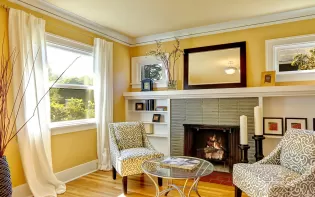
Shelf Design on Wall: Modern Guide for Stylish Spaces
Published: 12 Sep 2025 | Modified: 12 Sep 2025
Quick Summary
Choosing shelves for the wall is about more than storage. The right profiles, materials, and placements can shape a room, tidy daily essentials, and frame personal objects with intention. This guide walks through principles, room-wise ideas, and practical steps to help you plan a Shelf Design On a Wall that suits your taste and space. You can adapt each idea to different budgets, room sizes, and styles with patience and care.

Create Your Dream Home With Our Painting Experts
Fill the form below to book a free site evaluation by Nerolac Nxtgen painting Services expert
Wall shelves do more than hold things. They shape a room, open floor space, and draw the eye to what matters. With the right shelf design on the wall, you can blend storage and display without fuss. This modern guide covers layout basics, materials, and styling ideas for living rooms, bedrooms, kitchens, and compact corners. Whether you prefer quiet lines or bold geometry, Wall Shelf Design can adapt to your needs and budget, creating practical surfaces that feel tidy and intentional. Read on to know more.
Why Is Shelf Design on Wall Important for Modern Homes?
Homes today often serve several roles at once. A living room may double as a workspace. Wall shelves free floor area and keep the plan light. They turn vertical surfaces into quiet organisers that do not crowd the eye.
Wall Shelf Design also helps you zone a space. A slim run above a desk marks a study corner. A picture ledge behind a sofa becomes a casual gallery. In rented homes, shelves can deliver function without significant changes. With thoughtful placement, a Shelf Wall Design can keep cables, chargers, and small devices in order.
What Are the Benefits of Choosing Modern Wall Shelf Design?
Modern Wall Shelf Design focuses on clean lines, simple hardware, and adaptable modules. The approach works well in Indian apartments where daylight and floor space are precious. Key benefits include:
- Visual lightness that keeps interiors calm
- Flexible layouts that grow with your needs
- Easier cleaning because floors stay clear
- Safer access when items sit at a reachable height
- Options to blend storage and display in one plane
- Better use of odd corners and narrow walls
When planned with care, a Shelf Design Wall can look purposeful rather than busy. The aim is to give each object a place and leave breathing room around it.
Top 10 Shelf Design on Wall Ideas for Every Room
Here are the top 10 shelf design on wall ideas for every room:
Floating Shelf Wall Design for Minimalist Interiors
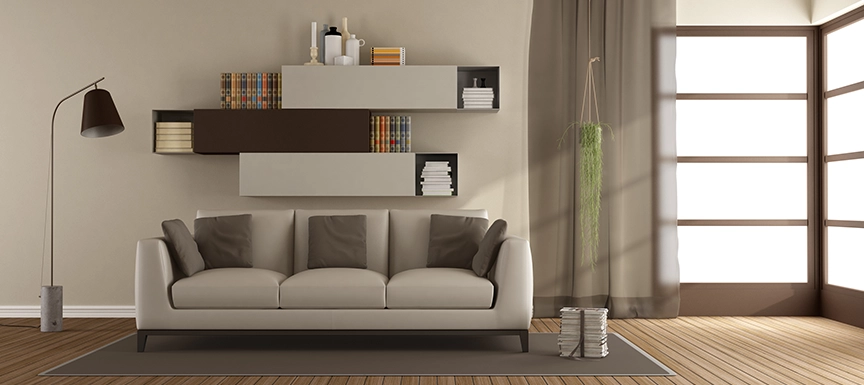
Floating shelves suit rooms that prefer a minimal look. Hidden brackets keep the focus on the surface and the objects. Use two or three shelves above a media unit or console. Leave at least one shelf partly empty so the eye can rest. For a cohesive mood, match the shelf finish to the skirting or door frames. Group objects in threes. Pair a book stack, a small plant, and a ceramic piece. Keep heights varied so the arrangement feels natural.
Modern Wall Shelf Design with Geometric Shapes
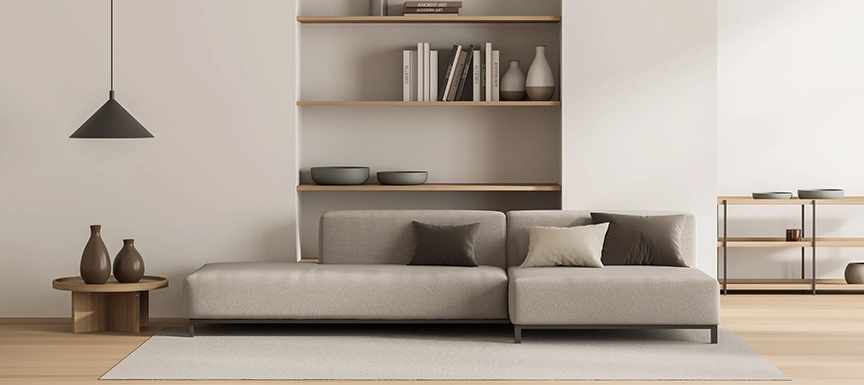
Squares, circles, hexagons, and arches add gentle rhythm to plain walls. Arrange geometric modules in a loose grid, leaving gaps for negative space. The look works in entryways and bedrooms. Balance solid modules with a few open ones so the whole set does not feel heavy. Use one dominant shape and repeat it across sizes. Too many shapes can look scattered.
Wall Bookshelf Design for Study and Reading Corners
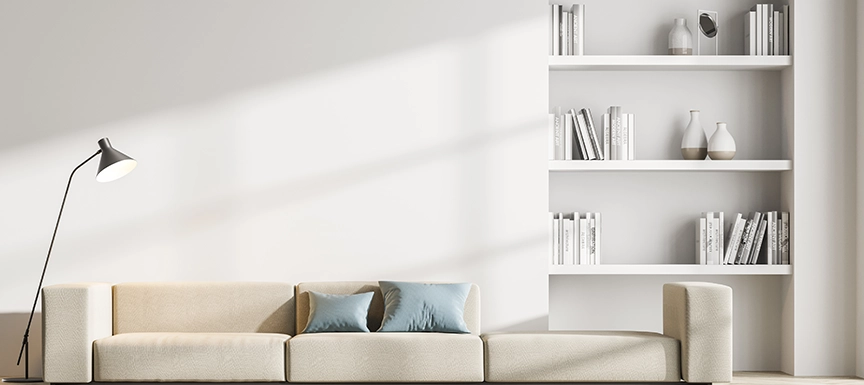
A Wall Bookshelf Design can be slim yet strong. In a study, keep shelves between eye and shoulder height for comfort. Reserve the top shelf for light items and the lowest for files or boxes. Add simple bookends to avoid crowding. If the room is small, run a single ledge across the wall and stack books in short horizontal piles to reduce visual weight. For young readers, label baskets by theme. Rotate a few books each month so the corner stays fresh.
Corner Shelf Wall Design to Maximise Small Spaces
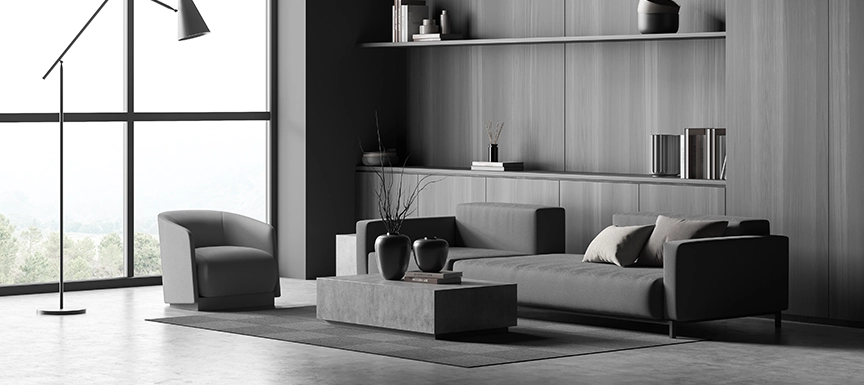
Corners gather dust if left empty. A corner unit turns that gap into storage for plants, speakers, or bath items. In living rooms, a tall corner ladder can hold throws, frames, and small planters. In kitchens, triangular tiers near the stove keep jars within reach. Use materials that match nearby cabinets for a seamless look. Measure the clearance for doors and windows before drilling. Light still needs to pass freely.
Wooden Shelf Design Wall for Classic Living Rooms
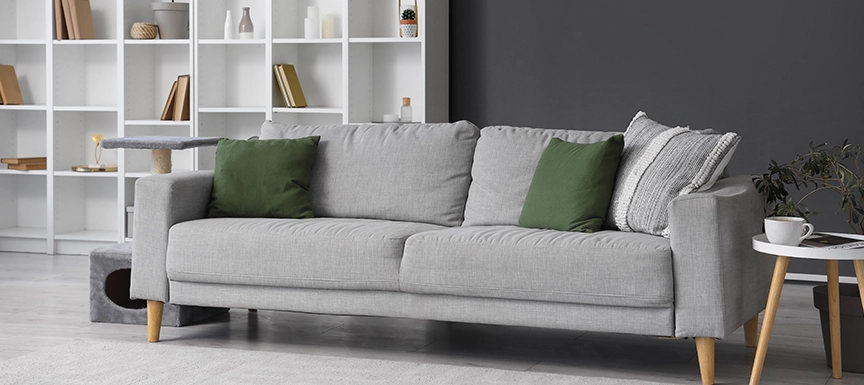
Timber has warmth that flat paint cannot match. A Wooden Shelf Design Wall brings this warmth to seating areas and dens. Choose walnut or teak stained finishes for a classic feel, or oak for a lighter tone. Keep profiles slim to avoid a bulky look. If the room has heavy furniture, offset it with open backed shelves that let the wall colour show through. Maintenance is simple. Dust often with a soft cloth and protect surfaces from hot cups and water rings.
Glass Shelf Wall Design for Contemporary Décor
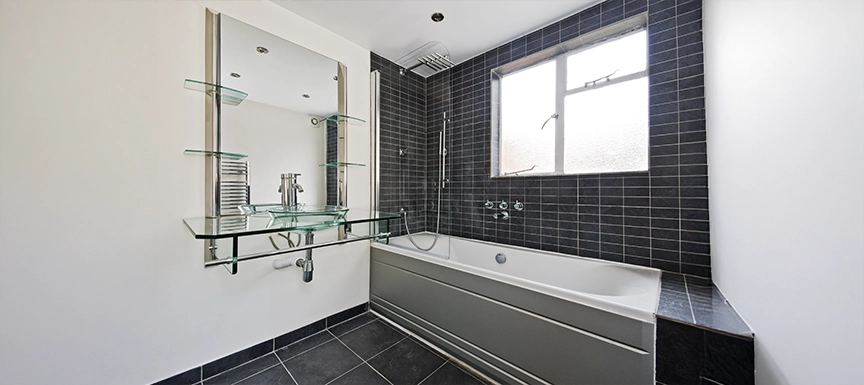
Glass adds clarity and a sense of air. In bathrooms, glass shelves keep toiletries visible while reflecting light. In dining rooms, they display glassware without adding mass. Use tempered glass with polished edges and secure brackets. Keep loads modest and spread items evenly. Combine with a light coloured wall to amplify the bright effect. Use a microfibre cloth and a mild cleaner. Avoid abrasive pads that scratch.
Metal Wall Racks Design for Kitchens and Bathrooms
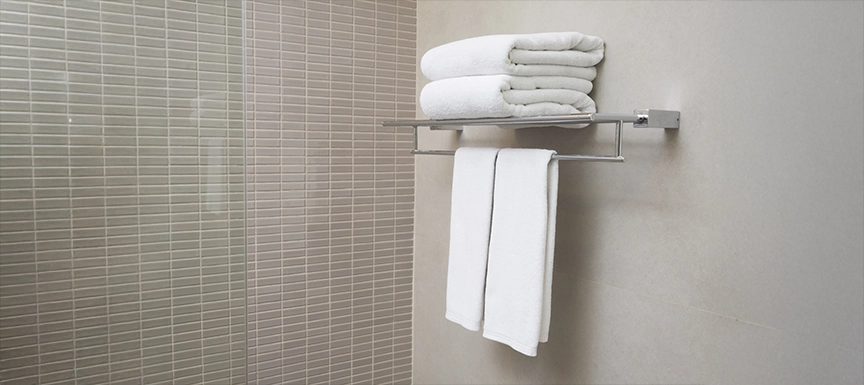
Metal rails and racks carry daily tools with ease. In kitchens, a metal wall rack design can hold pans, ladles, and cups on hooks, freeing drawers for dry goods. In bathrooms, powder coated frames resist moisture and suit towels and baskets. Pair metal with wood for warmth or with glass for a clean, crisp mood. Before fixing into tiles, confirm the position twice and use appropriate plugs. Aim for a layout that avoids crowding the sink or hob.
Multi-Layer Wall Shelf Design for Storage & Display
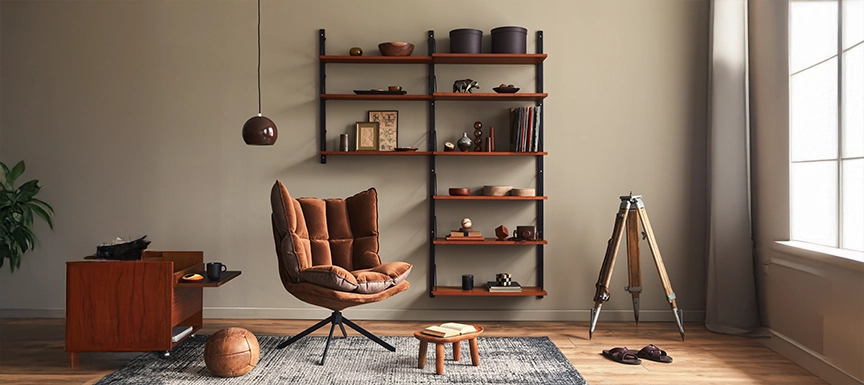
In family rooms, multi layer runs mix closed boxes with open shelves. Keep the middle zone open for the television or art, and place closed units low for toys or media. Use adjustable pegs so shelf heights can change as needs evolve. A neutral finish lets colourful books and objects stand out without noise. Plan cable routes early. Small cutouts at the back of units keep wires hidden and tidy.
Decorative Shelf Wall Design with Lighting Accents

Lighting can lift a simple Shelf Wall Design into a focal point. Fit LED strips under shelves for soft glow. Use warm white in living rooms and cooler tones in kitchens. Picture lights above art ledges add a gallery feel. If wiring inside walls is not practical, consider battery powered puck lights for small niches.
Always test light placement at night. The goal is gentle illumination without glare on screens or mirrors.
Space-Saving Wall Racks Design for Compact Homes
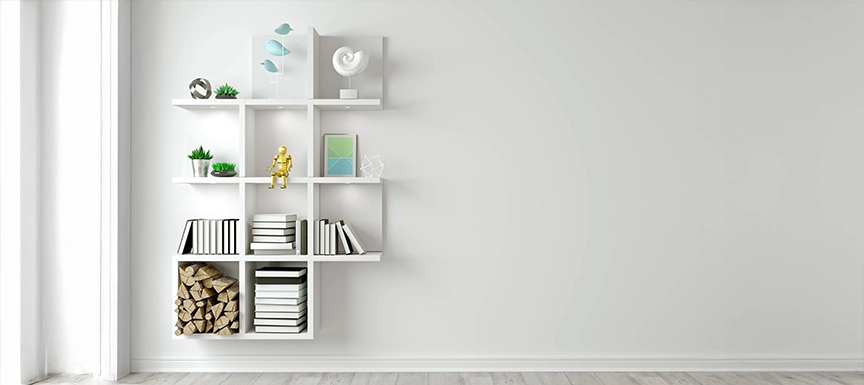
When every inch counts, flat wall racks hold keys, bags, umbrellas, and mail. In entryways, add a small bench below for shoes. In bedrooms, mount a shallow rail with hooks inside wardrobes to clear side tables. In utility rooms, a pegboard keeps tools and labels neat. Choose a single material palette so the system reads as one piece rather than many parts. Keep pathways clear by checking door swings after installation.
How to Choose the Right Wall Shelf Design for Your Home?
Start with purpose. Make a quick list of what needs a home. Books, plants, art, speakers, cookware, skincare, toys, or office files each demand different depths and weights. Measure the wall and note switches, door frames, and windows. Sketch a simple elevation with expected shelf heights. Leave gaps around outlets and keep at least 30 cm between shelves for tall items.
Material choice matters. Wood warms a room, glass lightens it, and metal adds utility. For a modern wall all shelf design, keep colours close to the wall tone or pick a contrast that ties into existing accents like frames or cushion covers. In humid areas, avoid raw MDF and prefer sealed plywood or powder-coated metal.
Hardware is the quiet hero. Use anchors suited to your wall type, whether brick, concrete, or gypsum board. Heavier loads need longer screws and solid blocking. When in doubt, reduce span length or add hidden brackets to prevent sag.
How to Apply Modern Shelf Design on Wall Effectively?
Begin with a simple two thirds rule. If a wall is four metres wide, let the main shelf span around two and a half to three metres. The remaining space keeps the layout relaxed. Stack shelves with consistent margins, such as 35 cm between rows, and align edges with nearby furniture for a unified line.
Layer objects with intention. Think in zones. One area for books, one for plants, one for personal items like travel souvenirs. Use trays to gather small things and vary heights. Step back after each round and remove one item from each shelf to prevent clutter.
Consider light. If sunlight hits directly, protect books and fabrics. Use blinds or place sunlight safe items on those spots. In dark corners, add small lamps or LED strips to bring life back to the arrangement.
Conclusion: Transform Your Home with Stylish Shelf Wall Design
Shelves on the wall are quiet workers. They create order, hold memories, and anchor rooms without taking precious floor area. With a clear purpose, modest materials, and careful fixing, your Shelf Wall Design can serve for years while staying easy on the eye. Start small, review after a week, and refine the layout until it supports your routine with ease.
Key Takeaways
- Plan shelves for the life you live, not just a photo.
- Choose materials that suit the room.
- Keep shelf spans sensible for strength and balance.
- Let objects breathe with intentional empty space.
- Maintain a steady rhythm in spacing and alignment
- Use reliable hardware suited to your wall type.
- Add gentle lighting to lift the display.
- Aim for a calm, useful backdrop that supports daily routines.
Nerolac Paints, a leading paint company in India offers a wide range of wall paint colours & painting services & solutions for homes & offices.
-
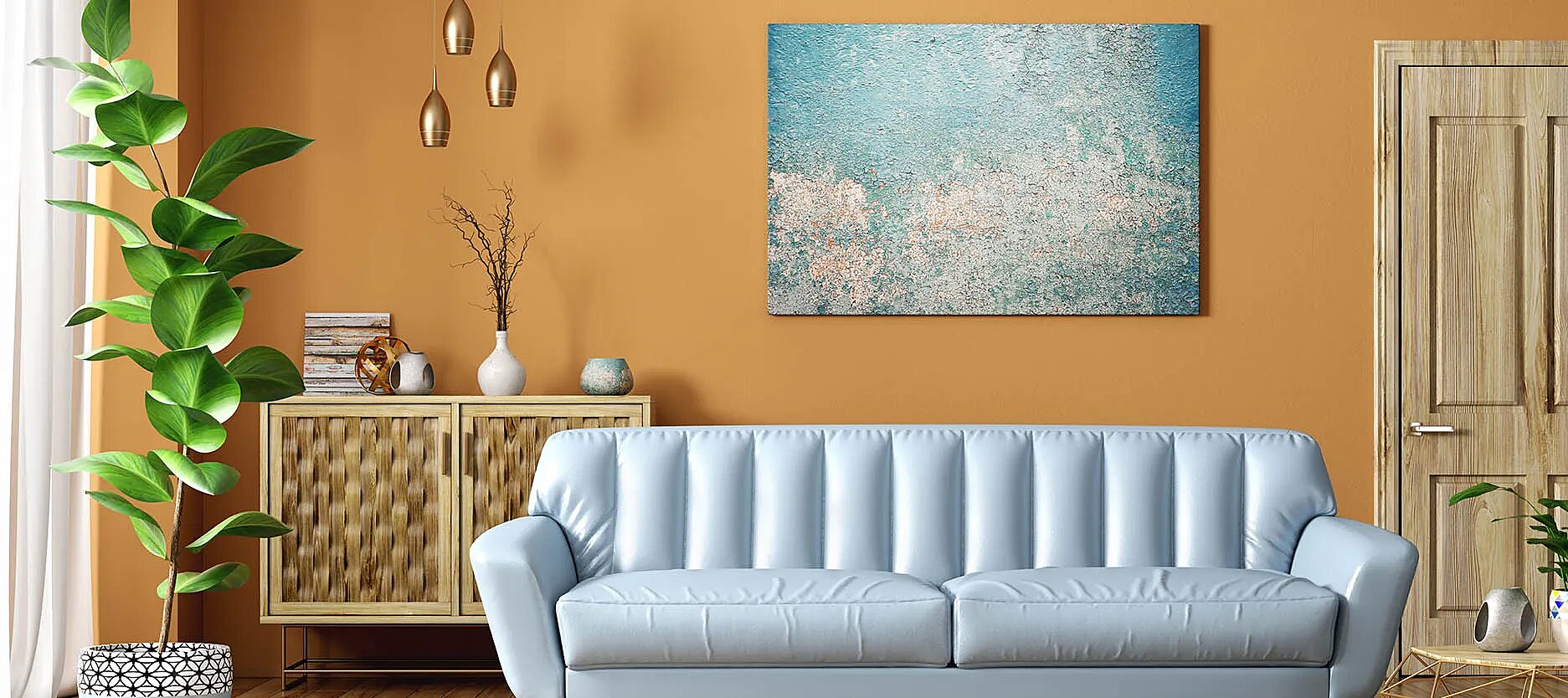
Best Colour Combination For Walls To Elevate Your Home Interiors Best Colour Combination For Walls To Elevate Your Home Interiors
Intoduction:In 2025, harmonious colour schemes for individuality and…
-

What Colours Match with Blue? 14 Colour Combinations with Blue for Your Home What Colours Match with Blue? 14 Colour Combinations with Blue for Your Home
Blue is a universally popular colour for décor and design; choosing a colour…
-
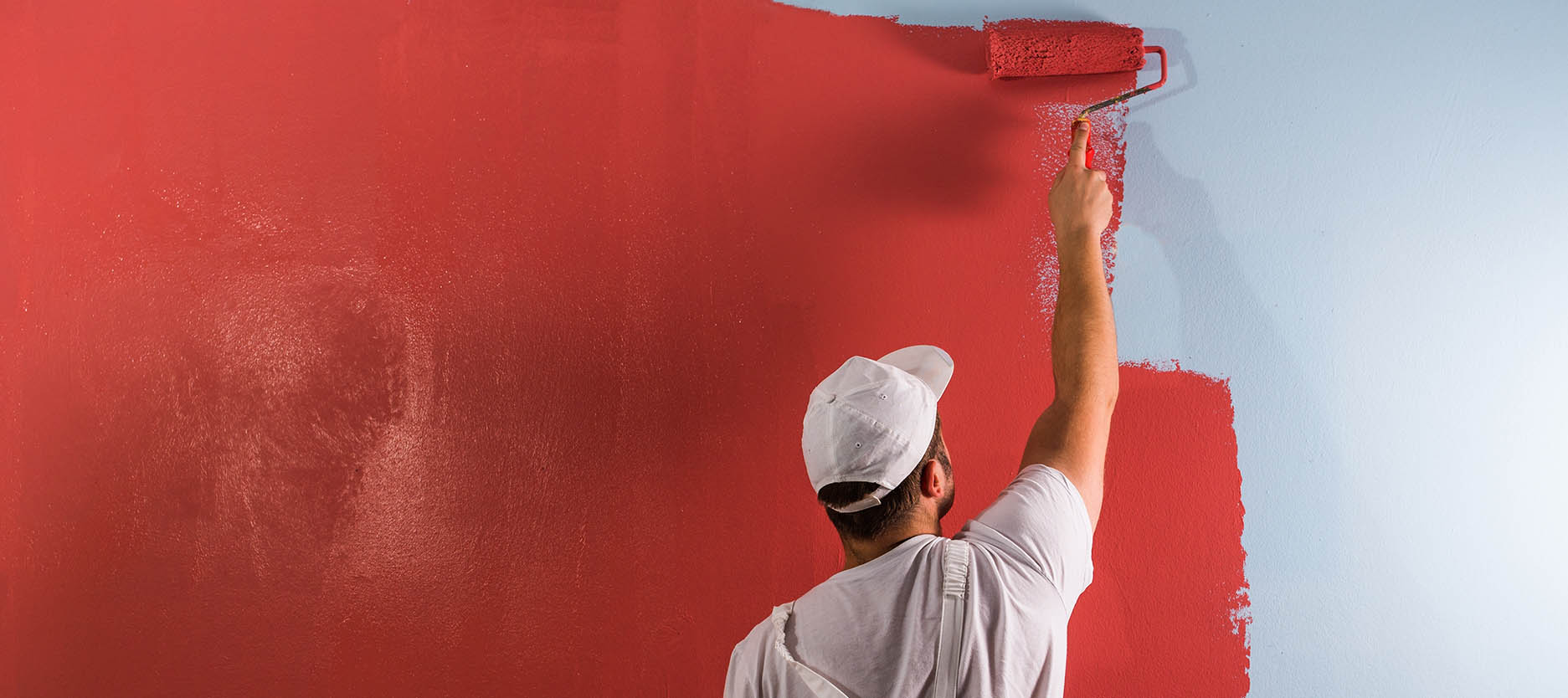
What Are The Different Types Of Paint For Home And Interior Walls? What Are The Different Types Of Paint For Home And Interior Walls?
Introduction:When it comes to home decor, nothing transforms a room as…
-
Recent Blogs
- Vibrant Diwali Decoration Ideas for Living Room, Pooja Room & Balcony
- Diwali Wall Painting Ideas – Easy Art & Colour Designs
- Festive Home Paint Colours: Transforming Your Walls and Décor
- Vibrant Diwali Paint Designs - Transform Your Home This Festival Season
- Creative Diwali Decoration Ideas for Indoors and Outdoors
-
Get in Touch
Looking for something else? Drop your query and we will contact you.
FAQs
What are the best modern wall shelf design ideas for living rooms?
How to select a shelf design on wall for small spaces?
Which wall bookshelf design is best for organising books?
Can a shelf wall design also serve as a decorative element?
What is the difference between floating and mounted wall racks design?
Which materials are best for a durable wall shelf design?
How do I choose a wall bookshelf design for a study area?
Can modern wall shelf design improve home aesthetics?
How to maintain a shelf design on the wall to prevent damage?
Where can I find trendy shelf wall design ideas for 2025?
Get in Touch
Looking for something else? Drop your query and we will contact you.
Popular Post
Popular Searches
-

Get in Touch Get in Touch -

Store Locator Store Locator -

Download App Download App
Get in Touch
Looking for something else? Drop your query and we will contact you.





